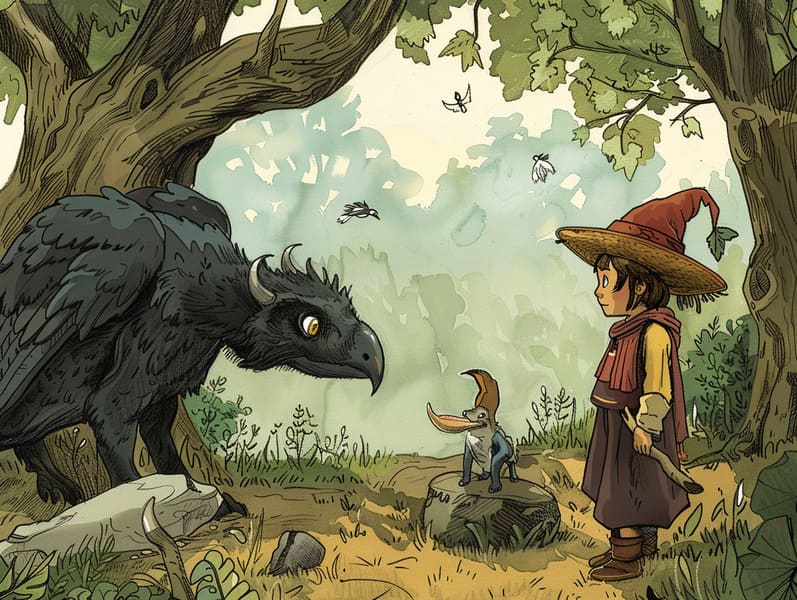The Creation of Famous Fairy Tales and Its Enduring Spell.
The Creation of Famous Fairy Tales and Its Enduring Spell.
Blog Article

Classic fairy tales have legendary status. These stories have been told from one generation to the next long before they were ever published. They arose from a variety of societies, including Indigenous traditions. They were initially told among elders, often carrying themes and messages mirroring the societal norms and beliefs of the time.
The famous Grimm duo, Jacob and Wilhelm, were among the first to assemble many of these beloved tales. Their compilation, "Grimm's Fables," included narratives like "Cinderella," "The Bread Crumb Trail," and "Schneewittchen," which have since become mainstays in the world of timeless fairy tales. Similarly, Hans Andersen's imaginative stories, such as "The Mermaid," and "The Duckling's Story," have enchanted hearts worldwide, solidifying their place in the pantheon of beloved fairy tales.
Though they are centuries old, these tales remain as relevant as ever, especially as children's night stories. These delightful tales are now available in numerous formats, including artistically illustrated books, magical animations, and digital storybooks.
Their enduring popularity can be connected to several whimsical characteristics:
Crucial Morals: Classic fairy tales often provide important moral lessons. Tales like "The Story of the Boy Who Cried Wolf" teach the significance of truth, while "The Tale of the Tortoise and the Hare" exemplify the virtues of perseverance and meekness. These tales offer children clear distinctions between virtue and vice, developing their moral compass in a subtle yet lasting way.
Kindness and Comprehension: Old fairy tales frequently present personalities facing challenges and struggles, stimulating young readers to relate with their struggles and encourage their triumphs. For instance, "Beauty's Beast" points out the necessity of seeing beyond the surface to appreciate the true character of a person, cultivating insight and perception.
Cultural Perception: Many ancient fairy tales are deeply embedded in the cultural contexts from which they blossomed. Reading these narratives can provide delightful insights into different backgrounds, developing a sense of world respect and knowledge.
Fantasy and Imagination: The mythical elements in old fairy tales—fairy godmothers—trigger children’s fantastical thinking. These narratives guide readers to supernatural realms, revitalizing innovative dreams and a sense of wonder that remains a lifetime.
Ancient fairy tales are not only magical but also didactic. They provide captivating tools in nurturing various intellectual and emotional capacities in little ones. When classic fairy tales are voiced, they develop verbal development by bringing new linguistic elements and elaborate sentence structures. This practice also advances listening skills and concentration, as young readers remain attentive, looking forward to see what happens next.
Furthermore, deliberating the themes and characters of fairy tales can strengthen evaluative skills and analytical skills. Children are taught to find patterns, make predictions, and realize cause and effect. These discussions also ease little ones utter their thoughts and feelings, adding to their emotional intelligence.
In today’s electronic age, the abundance of web-based fairy tales has made these tales more available than ever. Websites and digital apps share broad selections of famous fairy tales that can be browsed or listened to anytime, anywhere. Fairy tales voiced are particularly liked, providing an engaging way for young ones to delight in these charming stories. Sound books and narrated videos transport characters and settings to life, often supported by whimsical harmonies and instrumentals that raise the storytelling journey.
The persistent attraction of classic fairy tales lies in their ability to adjust to the present while keeping their main lessons. Contemporary renditions of these stories often spotlight more diverse characters and modern settings, making them relevant to today’s audience. However, the main ideas of boldness, understanding, and justice remain unchanged, continuing to touch readers of all ages.
Timeless fairy tales also offer a sense of reassurance and familiarity. They give a organized narrative with a recognizable beginning, middle, and end, often concluding with the ending of conflicts and the triumph of good over evil. This uniformity can be solacing for kids, offering a sense of unchangeability in an unstable world.
Classic fairy tales continue to bewitch and guide new generations, maintaining their splendor and relevance in modern society. As bedtime stories for kids, they confer a perfect blend of charm and enlightenment, more info fostering moral values, empathy, and creativity. The presence of digital fairy tales and the well-liked nature of fairy tales read aloud affirm that these classic tales remain available to new generations.
By protecting and disseminating these stories, we continue to cherish the rich tapestry of inventiveness and cultural heritage. Whether you are delving into a vibrantly illustrated book, viewing a electronic library, or playing an read-aloud book, the magic of classic fairy tales is always within reach. These narratives reveal of the eternal essence of fairy tales and its ability to link us across generations and cultures.
Regardless if you are viewing a artistically illustrated book, exploring a digital collection, or listening through an voice book, the wonder of children's fairy tales is always within reach.
These narratives demonstrate of the enduring power of fairy tales and its ability to connect us across generations and cultures, establishing a link that captivates and teaches alike.